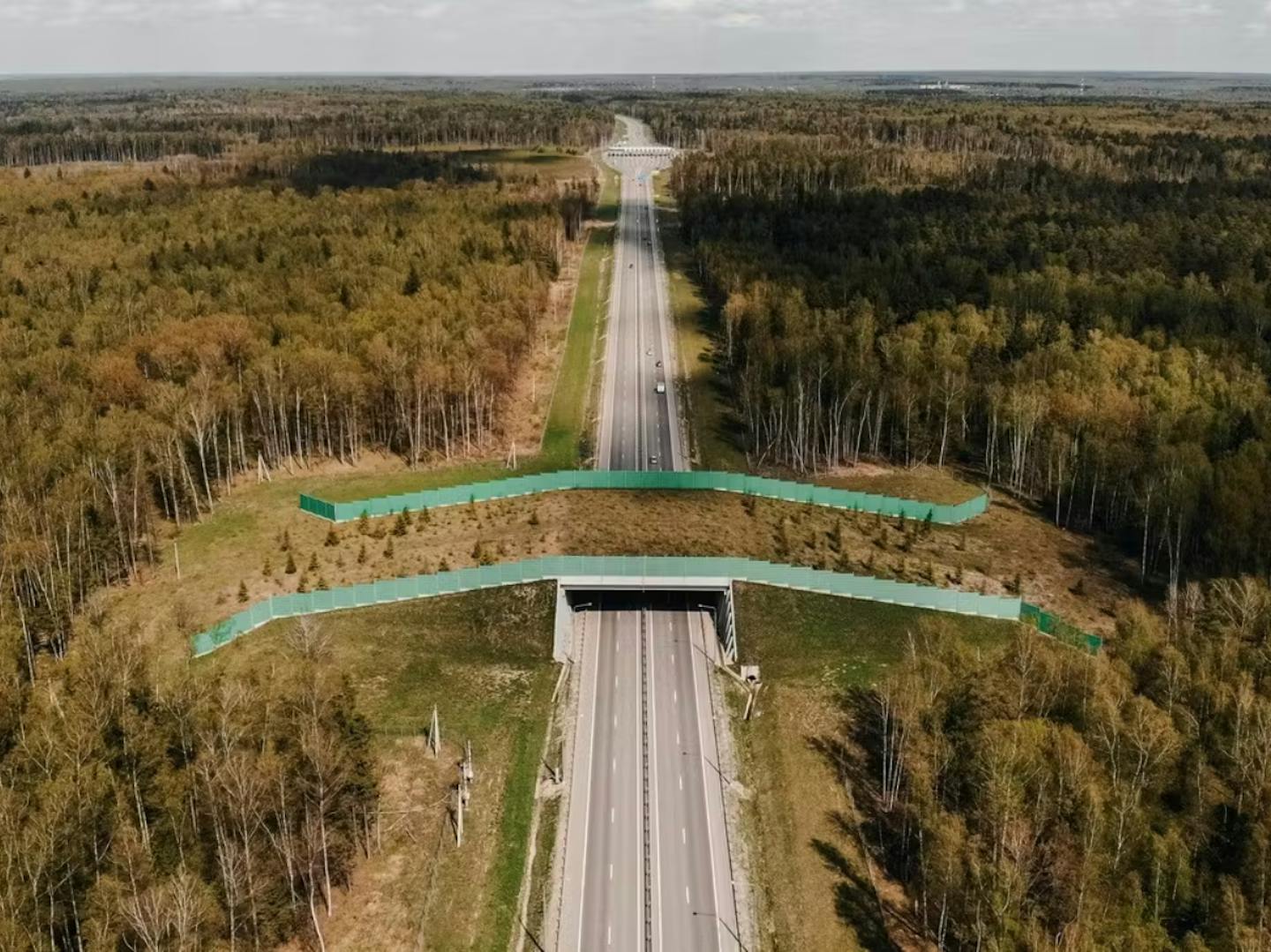Connectivity: ecological corridors are key to protecting biodiversity
- Nature Conservation
- Wildlife Connectivity
- Land Corridors
- Buffers & Greenways
- Rivers & Streams
- Marine Corridors
- Biodiversity
It is no secret that habitat destruction and fragmentation are the leading causes of biodiversity loss worldwide, and climate change is only making it worse.
Species blinking out, shrinking populations, and significant range contractions caused by human activities have negative impacts on biodiversity as well as ecosystem functions and services. Extinction events have happened before in our Earth’s history, but this time, they are happening much faster.
Existing conservation efforts: Protected areas and their limitations
Concerned scientists, citizens, and governments have been raising the alarm over habitat and biodiversity loss and related issues for decades. Solutions, including the designation and creation of protected areas, have so far failed at effectively addressing the problem. Haphazard placement and lack of strong management are among the reasons.
Members of the IUCN Connectivity Conservation Specialist Group — have released new Guidelines for Conserving Connectivity through Ecological Networks and Corridors. These recommendations, the first of their kind, suggest a major shortcoming in conservation to date: lack of consideration for connectivity between protected areas.
While the concept of an ecological corridor is easy to grasp, efforts to date to conserve corridors between protected areas have come up short. This is in part due to the fact the concept is quite new, and the conservation tools that we have in place were not developed with conserving connectivity in mind.
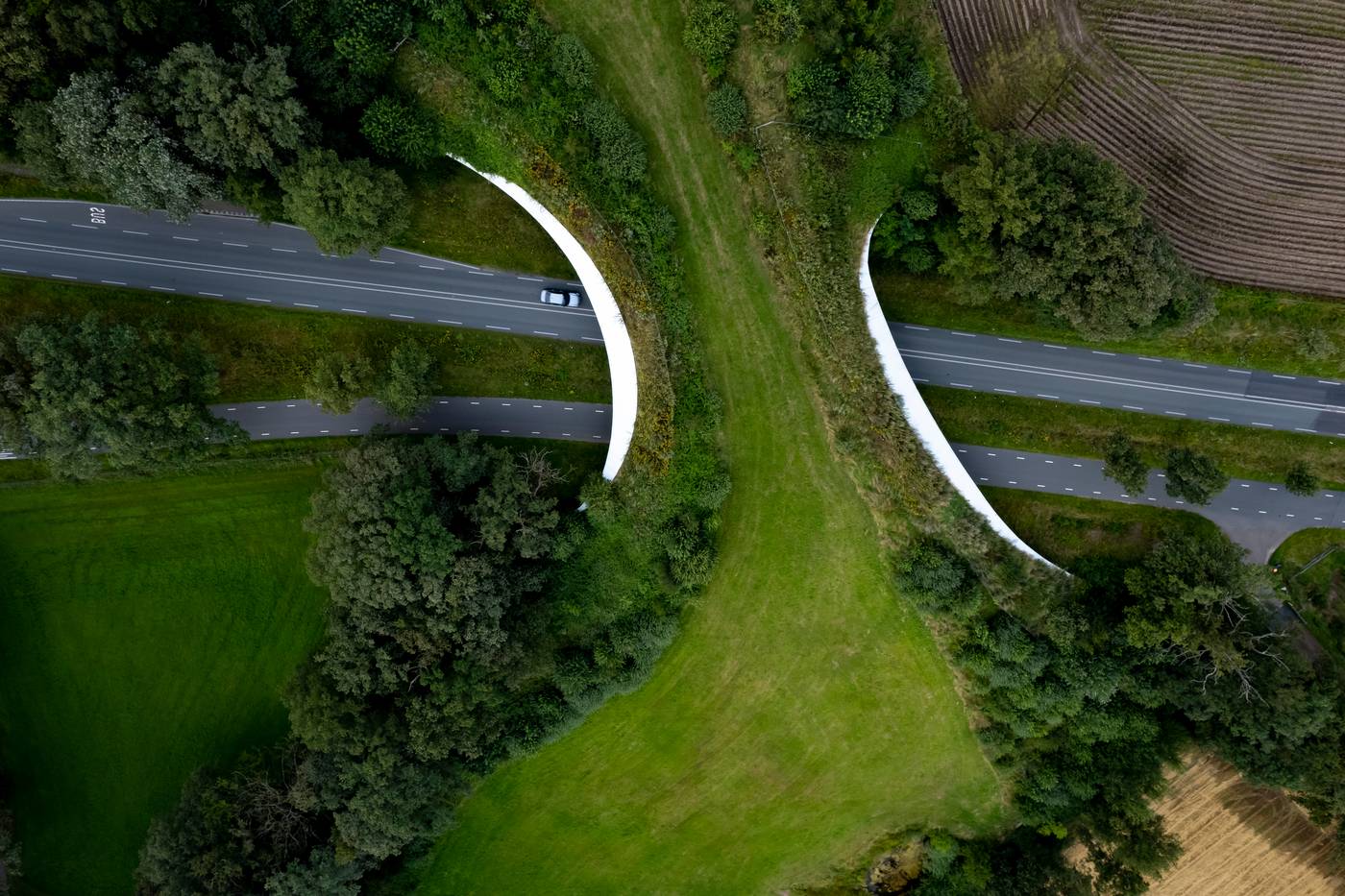
Road traversed by wildlife crossing forming a safe natural corridor bridge for animals to migrate between conservancy areas.
The Importance of Corridors for Biodiversity
Yet, the bulk of data demonstrates that more than ever, maintaining ecological connectivity through corridors is key to the conservation of our natural world. Connected, protected, and conserved areas are stronger, and corridors are a major component in successfully fighting fragmentation and strengthening biodiversity. These physical links are one of the most important ways to ensure species are able to move between protected areas and maintain genetic strength.
Wildlife has many reasons to travel across landscapes and between large protected havens. Daily movements, seasonal migrations, shifting habitats, escaping natural ecosystem disturbances, or the need to adapt to climate change are all possible.
What they face as barriers to their movement can vary as well. Fencing, highways, towns, and other development often stand in the way of finding mates, food, or new places to thrive. Connectivity conservation is therefore needed at local, regional, and global levels and across landscapes with various degrees of influence from people.
Connectivity management ranges from smaller scales, such as between streams or berry patches, to regional and even continental scales, such as major rivers or mountain ranges. Increasingly, looking at landscapes at the scale at which wildlife uses it has become a focus in the conservation world.
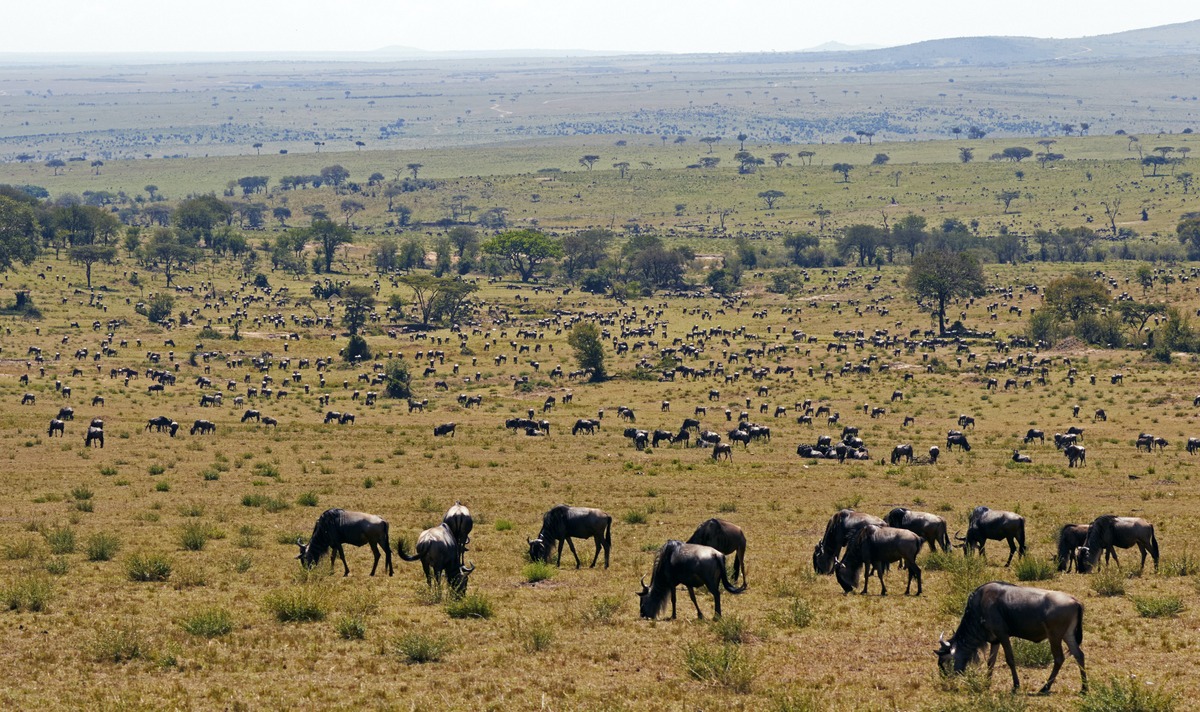
The annual wildebeest (Connochaetes spp.) migration between Tanzania and Kenya is one of the world’s great wildlife movement spectacles. Image credit: Courtesy of Gary Tabor
Large-scale connectivity conservation initiatives
North America’s Yellowstone to Yukon Conservation Initiative, Australia’s Great Eastern Ranges, and South America’s Amazon Freshwater Connectivity are all among those established groups approaching fragmentation on this larger scale by connecting protected areas on land, freshwater, or marine locations. Corridors are one solution to allow for increased connection between these protected areas.
The guidelines recommend the adoption of a connectivity designation, or an ecological corridor, to indicate areas within ecological networks explicitly devoted to ecological connectivity—which could also contribute directly to biodiversity conservation.
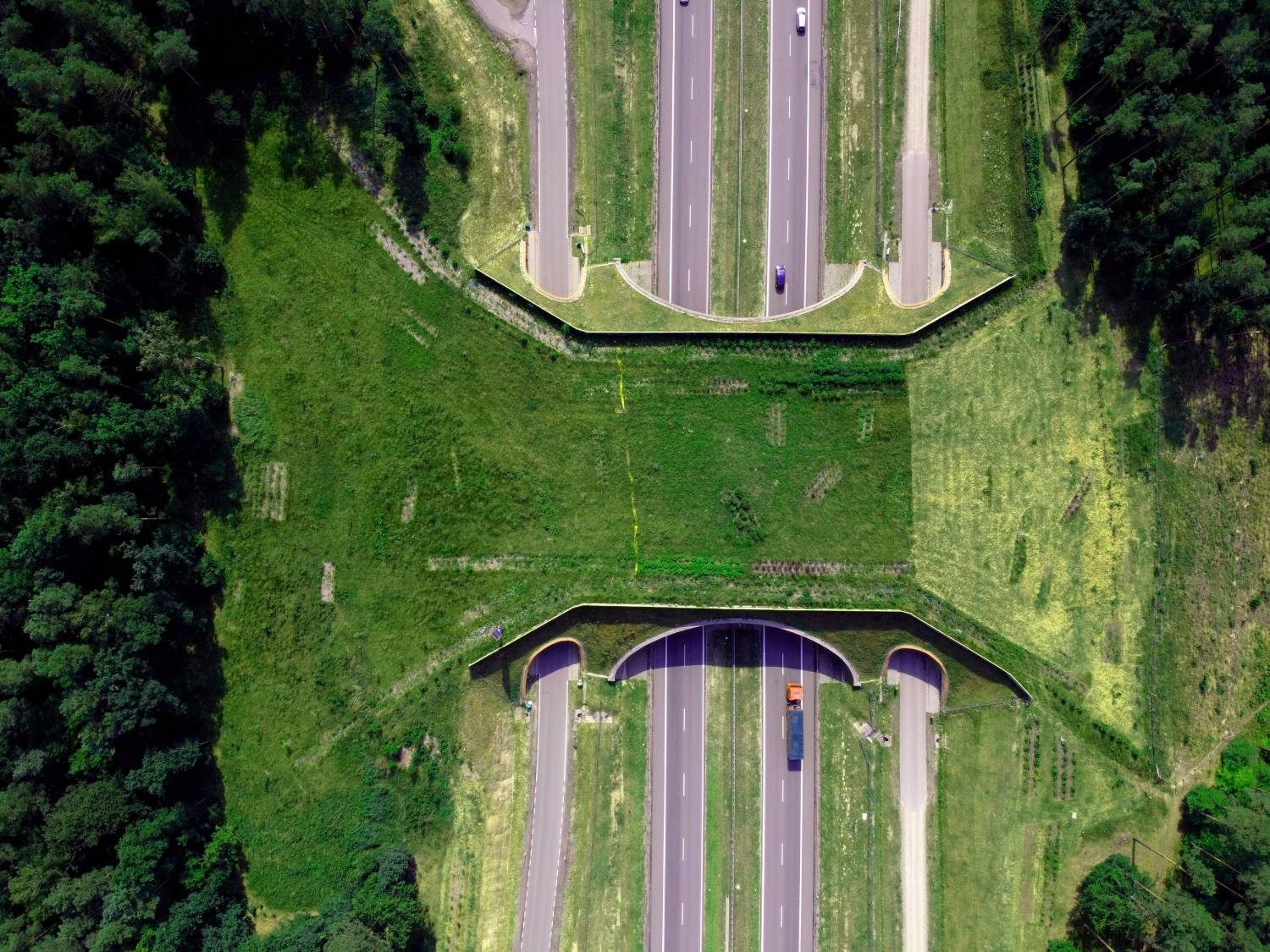
Wildlife crossing creates a safe natural corridor bridge for animals to migrate. Image credit: Bogdan Wankowicz
What is an ecological corridor?
An ecological corridor is a clearly defined geographical space that is governed and managed over the long term to maintain or restore effective ecological connectivity. When used in addition to core habitats in protected areas and other effective conservation mechanisms (OECMs), these components are the fundamental core elements of conservation and of any ecological network. It is important to consider the size of core habitats and isolation when meeting the connectivity needs of some species in conservation networks.
For large, wide-ranging species, individual protected areas are often not big enough to maintain minimum viable populations or to withstand larger ecological disturbances, such as wildfires. The reality today in many regions is creating new, large reserves is no longer feasible because small habitat fragments are all that remain.
While natural fires are part of any long-term ecosystem’s cycles, species can only recover from these events when large tracts of unburned habitat remain available adjacent to the protected area, so species can withdraw there and recover. Corridors make this possible by being a sort of escape route.
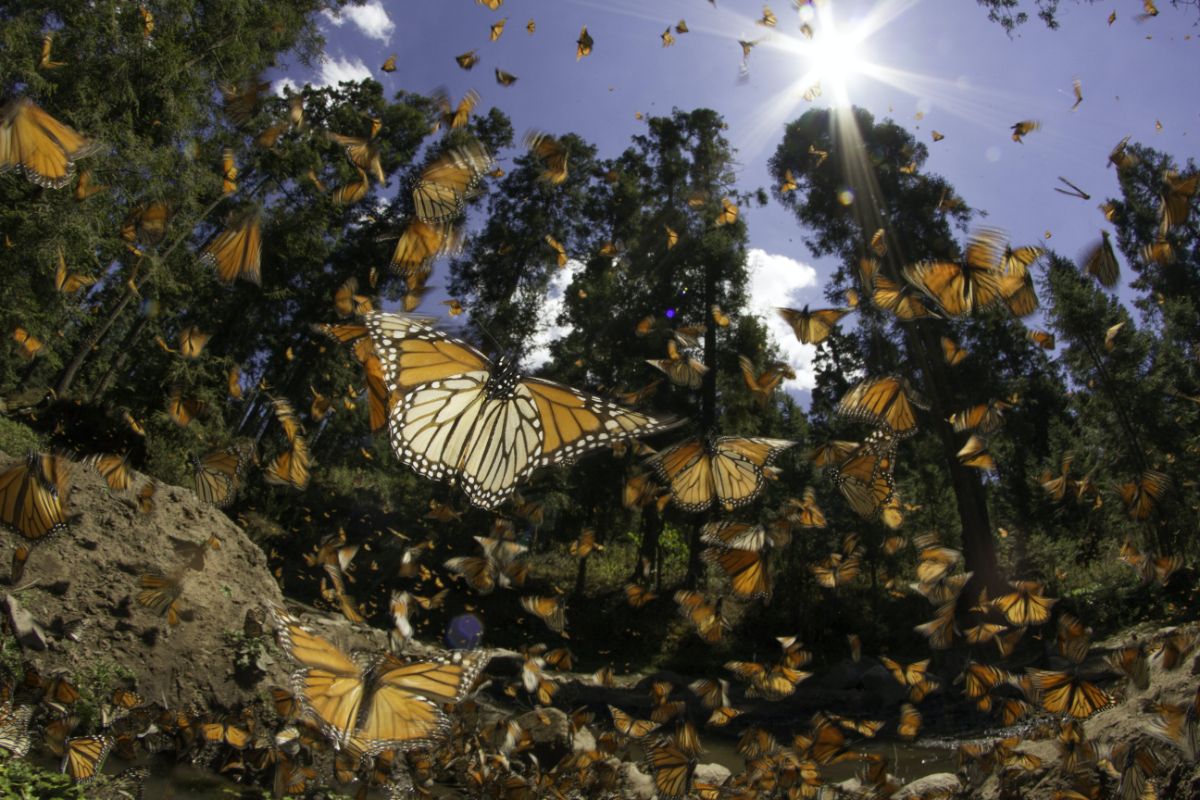
The great monarch butterfly migration serves as the iconic continental-scale migration of all invertebrate species. Migrating across long distances and several life generations, monarch butterflies remind us of how vital movement ecology is for species survival.
Benefits of ecological corridors for People and Nature
In addition to conserving nature, ecological corridors can benefit people. In some cases, these can also serve as pathways for mobile communities in hunting/gathering cultures and pastoralists. In other places, ecological corridors may also provide recreational benefits or may buffer rivers, streams, and wetlands. In some cases, corridors can serve as homes to crop pollinators or serve as sources of seed stock for forest regeneration.
Ecological corridors on land, freshwater, and in the sea are critical conservation designations needed to ensure that ecosystem functioning and ecological processes are maintained or even restored. These corridors are an essential part of ecological networks for conservation, naturally complementing protected areas or OECMs.
Providing a clear definition of ecological networks for conservation and guidance on how to identify, establish, measure, and report on ecological corridors aids many countries in reaching the goal of identifying, establishing, managing, and restoring the ‘well-connected systems’ spelled out in Aichi Target 11 of the Convention on Biological Diversity (CBD) and to achieve other commitments. It is also critical for the post-2020 global biodiversity framework established to advance progress towards achieving the CBD’s 2050 vision of “living in harmony with nature.”
The reality is no one method will solve the pressing issue of the mass extinction of species caused by widespread human alteration of ecosystems and climate change. However, together, protected areas, OECMs, and ecological corridors are a suite of tools to create effective land, freshwater, and marine ecological networks to effectively improve and conserve biodiversity today and into the future.
This article originally appeared on Mongabay.
Explore the Global Safety Net